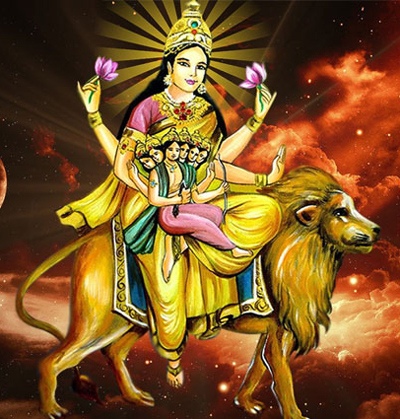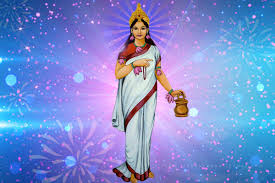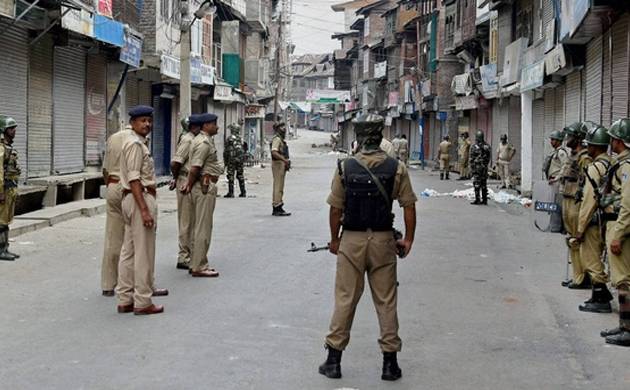For the welfare of the entire world and for the betterment of the devatas, goddess Durga manifested as nine different forms during the nine days of Navaratri. In this sequence, the incarnation of goddess Skanda-maata takes place exactly on the fifth day for blessing the devotees. In the Vedas and Puranas, various deities are not only equated with the parents, but they are…
Category: post
Fourth Avatar of Goddess Durga: GODDESS KUSHMANDA
On this earth, devotees have been regularly blessed by the divine energy since time immemorial. Be it the order of creation, the evolution of living creates, fighting with the evil forces or the establishment of humanity and religion on earth, nothing is possible without the grace of the cosmic goddess. Even though in this materialistic world, we have gone miles away from the core…
Third Avatar of Goddess Durga – GODDESS CHANDRAGHANTA
From the very ancient times, people in the great land of India have inspired to realize and witness the divine power of supreme god. A rich and refined culture is a witness that there have been many manifestations of the divine on this land in various forms. It is clear that happiness and prosperity of a nation are not possible…
Second Avatar of Goddess Durga – GODDESS BRAHMACHARINI
The sacred land of India has time and again experienced divinity of gods and goddesses for the welfare of living beings since time immemorial. In this life which is dominated by Maya, individual experiences sorrow, grief, fear, diseases, etc. Hence, one worships goddess Durga to get rid of these issues from his life. Sri Durga is known as Brahmacharini on…
The Rise Of The Guardians – Leadership & Self-discovery
The Rise Of The Guardians – Leadership & Self-discovery The plot involves five of our childhood make-believe characters that make up The Guardians: Santa, Easter Bunny, Sandman, Tooth Fairy and Jack Frost. While the evil side is represented by the Boogeyman. Our guardians characterized in movie: Santa as WONDER Rabbit as HOPE Sandy as DREAM Tooth fairy as CHILD…
First Avatar of Goddess Durga – GODDESS SHAILAPUTRI
Mother (Maa) Adi Shakti (Jagadamba) manifested for the betterment of the creation. Be it the slaying of cruel demons to save the celestial beings or removing pain, sorrow, agony, diseases, guilt from the human life. Mother Shailaputri is the epitome of kindness and auspiciousness. She is always ready to bless the devotees. Just by seeing her and performing the pooja,…
Leadership skills in Whatsapp Group Admin
While we talk about the leadership, the persona having capabilities to transform the vision, in reality, taking all teams along with him, becoming a guiding light, motivator all the time to reach the final goals. We never thought earlier about the comparing and taking an example of leadership qualities before on Whatsapp Group Administrator. The following write-up…
Paralysed life of locals in Kashmir
State of Jammu and Kashmir has been in dispute since India’s independence. We can say, 70 years of Independence and for this state, 70 years of struggle. Meeting and having conversations with the locals of the areas where disputes are part and parcel of daily life was softening and heart-breaking. It made me feel how blessed we are to deal…
Journey of Indian Flag
Before moving on to the history of Indian flag, let me answer, Why Do Countries Need a Flag? Each country needs a flag as a visual representation of its people—and to distinguish it from other nations. A flag is also a code of honor. When anyone sees an Indian flag, he gets reminded of a country called the India and…









